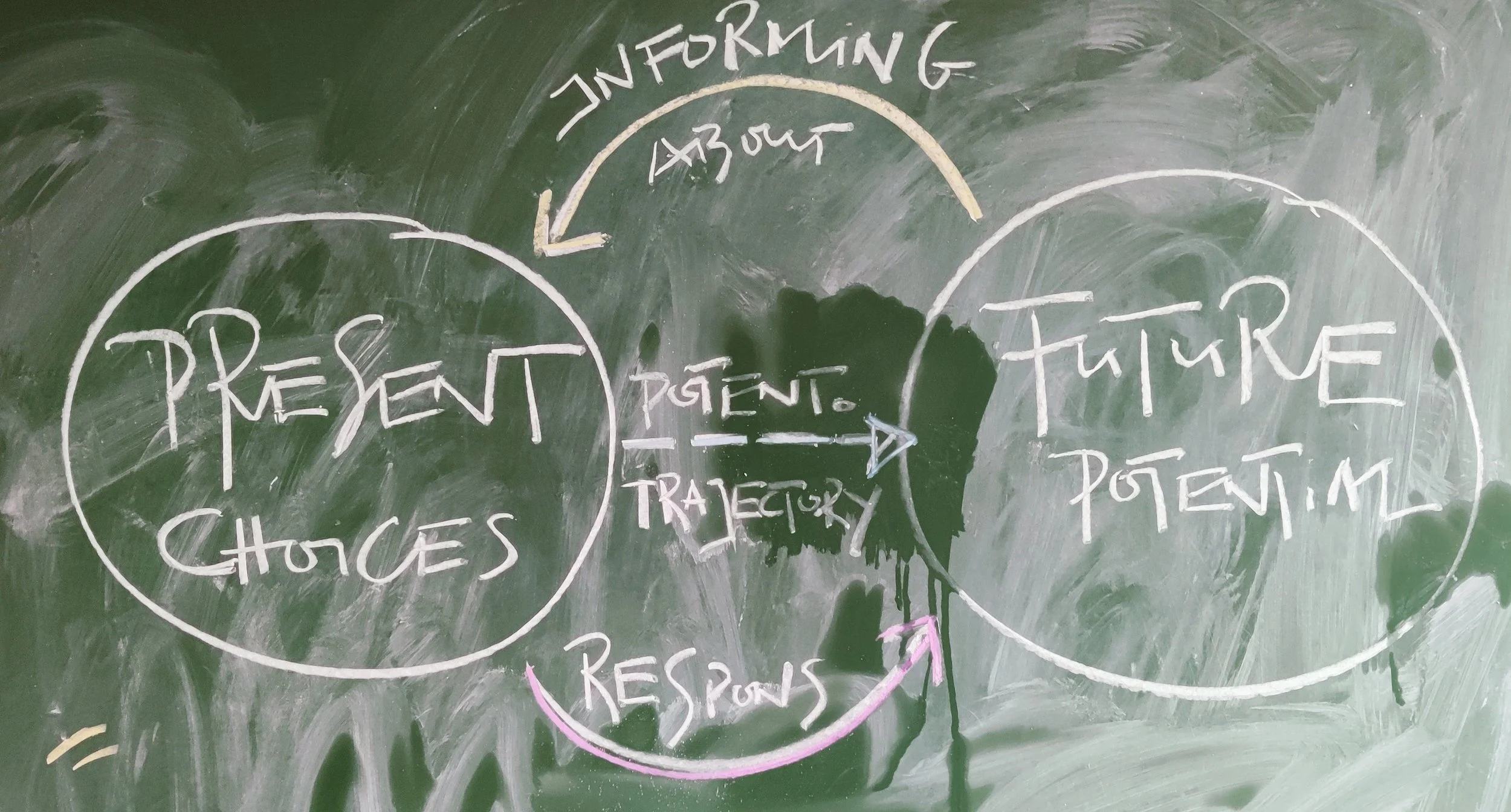Future Causality
Consensus reality seems agree that all causality has its roots in the past. Consequently, models for present phenomena (“what is”) consistently point backward, toward prior events. When we wonder why, our conditioned reflex is always to look over our shoulder—to what was.
Professional therapists, (over-) trained in analyzing past wounds and traumas as the origin of present-day pain, classically would argue: "Because his mother abandoned him in early childhood, he has always struggled to form relationships with women." The vector of causality points backward in time. Logic, as we've learned it, insists that everything showing up on the stage of the here and now is a blast from the past. Grammatically speaking, all present tense (=present tension!?) arises from the past tense. The script written on the pages of the present has been formatted in the archives of past life.
“El Classico” of causality: the past conditions the present.
Now, one would have to be blind to deny that a significant causal relationship between past and present does, in fact, exist.
But is it the only valid direction in which causality flows?
According to my perception of reality, we would be more holistically served by expanding our horizon of causality to include different forms of directionality.
The principal alternative suggestion I’d like to offer here today is to point the arrow in precisely the opposite direction—and begin to consider the future as an equally valid cause for what shows up in the present. A future causality rooted not in what was, but in what will be—or, more precisely, in what could become.
How about this vector of causality?
From my observations, future causality works as follows:
The future always knows what it is potentially meant to become. Note that I’m not saying what will become, but what potentially could—or even should. The should, by the way, stems from Life’s Overarching Intelligence (LOI). LOI holds the objective vision, the evolutionary blueprint—not only for the collective journey, but also for the individual’s path of individuation.
It is from this overarching, objective knowing that the future seeks to communicate—and motivate—into the present, nudging us toward the actions here and now that would move us in alignment with what is to come. In other words: the ulterior motive is always what is meant to become. It’s as if the target ahead of us is sending the arrow back through time, aiming to guide the bow of our inner Robin Hood toward the trajectory of the future Self.
To that end (which is always temporary, since all so-called ends soon become new beginnings), the future must have ways of informing the present about its potential becoming. Life’s Overarching Intelligence is constantly signaling from the future-to-be, triggering a well-aimed response in the here and now that aligns with the there and then.
The working logic of future causality:
A future potentiality is informing the present—omni-sapient(all-knowing) about its inherent meaning-to-be. Metaphorically speaking, it casts out a fishing line from the future in order to haul the present into a forward trajectory.
2. Best-case scenario: the fish (in present time and space) bites, and responds by acting on the lure from the future (no catch22 here!)
3. By choosing to follow this (life-)line, the fish is naturally pulled forward—not toward a random future, but toward a specific one: a manifestation geared towards both personal individuation and collective evolution. A beautifully aligned “both and”.
4. Thus, any given moment in space and time can potentially be guided by what is to become—its future causality. On the level of individuation, one could say: the person you are meant to become is trying to pull the person you currently are toward your future Self. The potential future exerts an evolutionary pull into the present.
In my therapeutic work—and my own life—I find myself primarily guided by future causality. With my Venus in Aquarius in the 11th house, I’ve always had a natural love for the future. I’m far more energized by what can be than by what was. Not because I don’t value the past, but because the future’s innate potentiality is so (literally) attractive. I always look forward—to what could be, to what wants to be created. The beauty of the future lies in its blank canvas (as opposed to the closed book of the past)—a canvas full of untapped possibility.



